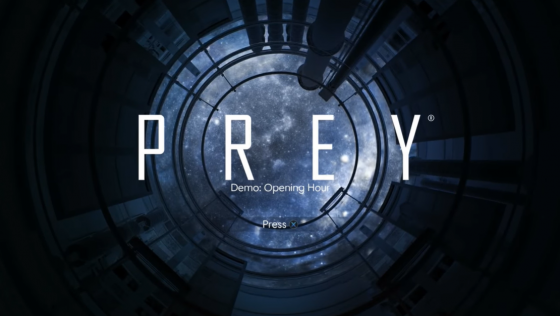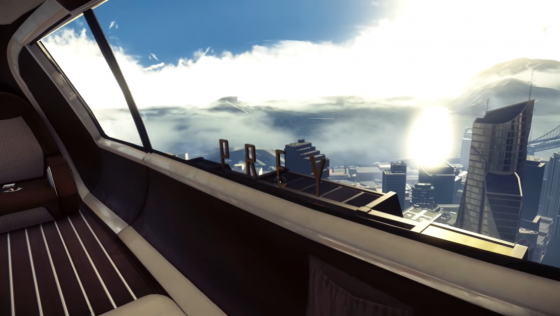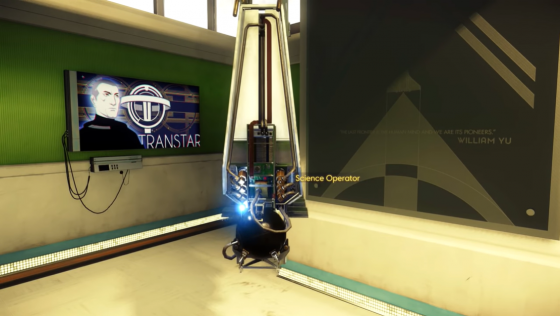Arkane Studios continues to pay homage to great games of our past.
Early Impressions
Prey is an interesting onion of a game. Its starts with a twist and then settles down into opening hours that feel a bit like games we've seen before: a bit of Bioshock, a bit of Dead Space, a bit of Half-Life. Then it starts unraveling. Not just on a narrative level, as protagonist Morgan Yu finds out what exactly is happening on Talos I, but on a structural level too.
In Dishonored, Arkane Studios went above and beyond not just in the abilities available to Corvo (and later Emily), but also in the playground you were able to use them in. Dishonored and its sequel had excellent level design, full of twists and turns, hidden secrets, and oblique ways to achieve your objectives. Arkane carries the commitment to complex level design forward into the new Prey.
The space of Talos I feels like a real place. These were research labs, offices, cafeterias, and gardens where people lived and worked. That shows in the debris, in the bodies, and in the small mementos of human thought: notes, books, whiteboards, audiologs, and computer screens. And while the space feels real, it also serves a strong gameplay purpose, with the same hidden paths that featured in Dishonored.
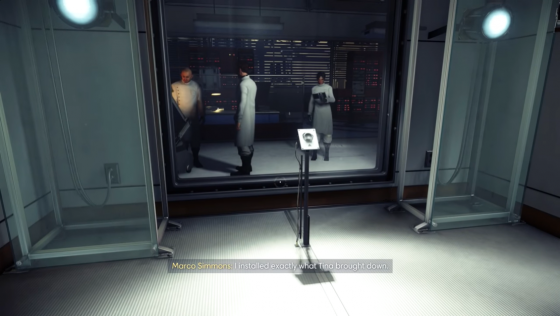
I call Prey an onion because as you spend time thinking about a room or corridor and begin poking around, you'll find new facets of places you've already been. As you gain more abilities, new directions that you didn't previously notice make themselves more apparent. Whereas Dishonored had distinct levels, Prey is a packed space station that twists and turns across itself. The scope of Talos I is impressive.
I said before that Prey recalls Bioshock, and the art deco stylings of Bioshock do find themselves into the living areas of Prey. Arkane Studios stretches themselves a bit more with some interesting set pieces and the slow decay isn't as apparent here as much as a swift fall, but it's a noticable thing. Otherwise, Prey is generally good-looking and absolutely beautiful when it wants to be.
Prey also delivers a pair on unsettling enemies in its early moments. The Mimics remain the highlight, a small skittering force that attacks and then darts away to shapeshift into a random object. Mimics work because you always have that moment where you ask yourself: "Did that chair move? Was it there before? Was I the one that moved it?" As I said in my preview though, the combat sound mix is still a bit off, so Mimics can sometimes come across as annoying, triggering combat music at what feels like random.
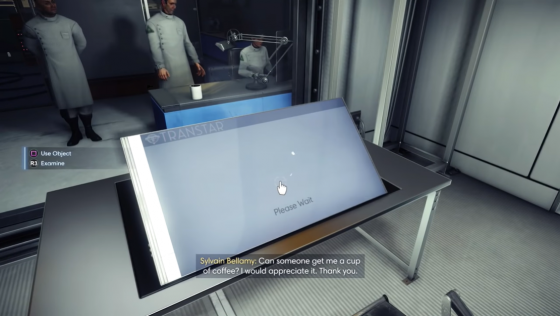
There's also the Phantoms, formerly human corpses taken over by the Typhon. Phantoms aren't interesting from a combat standpoint, but they're wonderfully creepy from a movement one. They flit around the room, in sort of a teleporting shadowstep that looks like a ghost's movement in a horror film. They'll blink in and out of reality in front of you, taking invisible steps in your direction. You'll eventually work out a solid Gloo Gun-Wrench-Shotgun combo to take them down, but they are unnerving early on.
Combat was still a miss for me in the beginning, but I think that's largely because I didn't build my Morgan for combat. Some of the Neuromods push you towards combat, while others improve alternate capabilities. You'll start with the Scientist, Engineer, and Security categories - you can guess which category is all about combat - before unlocking some additional, more esoteric categories later. Once you get some Neuromods and more equipment under you belt, Prey's combat becomes better, but it can be kind of a slog early on.
Those categories seem to be a bit more important than Dishonored's powers too. They create a larger impact on how you interact with the environment of Talos I. Prey has multiple endings and I'd guess that your Neuromod build will factor a bit into which ending you get.
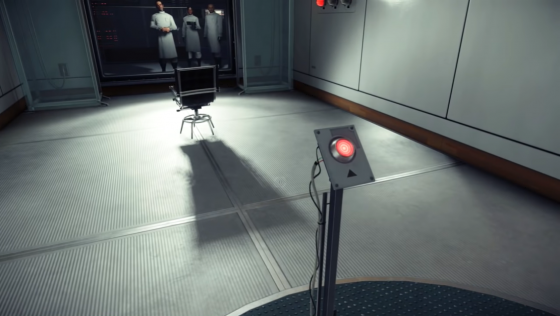
I'm only a few layers into the onion though, so I'd be remiss if I offered up anything approaching a final verdict. What I will say is I'm enjoying Prey more than I did during my demo. I guessed in my preview that the issue with the demo was partially down to not having enough Neuromods and equipment to create some interesting combinations, and I was right on the money there. So far, Prey is fulfilling an itch no one else is right now. Let's see if they stick the landing.
The Final Verdict
Well, that's Prey finished.
In my earlier entry, I called Prey an "odd onion" of game, noting that it's an experience that gets better the deeper you dive. That was a statement that remained true up until the end. Arkane's Prey pulls from the System Shock titles, a parent passing down their ideas to the next generation. It even contains facets and sides of Bioshock or Dead Space, two games that trapped their lone protagonists in huge complexes that acted as monuments to human hubris. I hesitate to call the final product completely original, but the truth is Prey doesn't have to. No one else is doing what it does and it performs its job well enough.
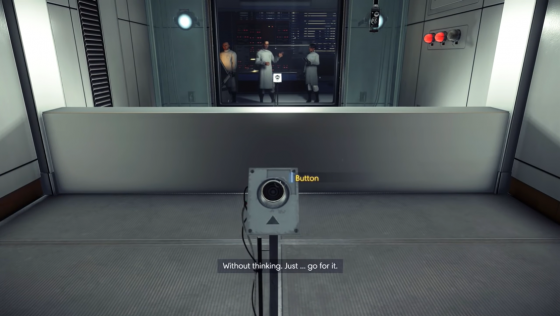
The twisting, winding halls of Talos I are a highlight of Prey, but the game really comes into its own once you start playing with the Neuromods system extensively. The starting trees offer some basic RPG improvements to Morgan, but it's once the latter three tree open up that things start becoming interesting. It's here that the game begins to sharply diverge depending on how you build your Morgan.
If you stick with the starting trees, it's something of a harder experience for the player, not unlike Dishonored 2's no powers option. They're more about keeping your feet on the ground, sticking to basic abilities. Run fast, lift stuff, kill better. Arkane has crafted a host of amazing weapons to make the experience fun, from the sustained destruction of the Q-Beam to the stunning power of the Disruptor. There's the Boltcaster, which does no damage, but can be used to trick shot and hit buttons normally out of Morgan's range. The coup de grace is the Recycler Charge, a thrown grenade that simply the matter it hits into valuable resources. The Recycler is my favorite weapon in the game, being useful as a tool of exploration and combat.
Is That You, Rapture?
The alternate path is activating the Typhon Neuromods, giving you the powers of the aliens you're fighting. Some of these are basic, like the Kinetic Blast, but you can get very tricky with the others. If you want to shift into alternate forms like the Mimic or teleport like Phantoms, the latter trees are where it's at.
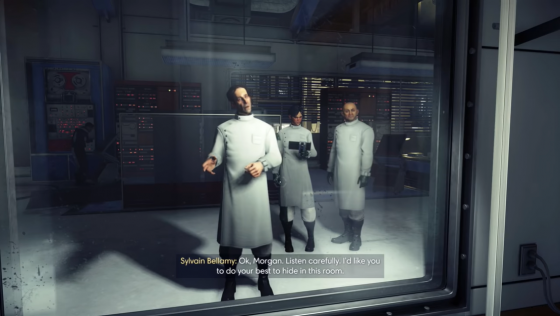
You're allowed to mix and match all six trees at your leisure, though the game exacts its price if you decide to give in to the alien powers. Defenses that are aimed at stopping the Typhon start to turn against you as you become less human and more unstoppable killing machine. To leave behind your humanity is to become uniquely empowered, but it also makes getting to certain spots more difficult.
The original System Shock was developed by Looking Glass Studios, with producer Warren Spector. Spector has always been a huge proponent of "choice and consequence" and that has shown in the System Shock games and later Spector projects like Deux Ex. Prey offers those same choices to the player. How do you craft your Morgan? Where do you want to go and how do you choose to get there? It's a game that begs to be broken. (As of this writing, someone has already broken the game to reach a complete time of under 20 minutes.)
Combat Never Really Rises To The Top
Prey is relatively short, with my running time coming in at around 14 hours. Given the shorter playtime and the wide variety of options available to the player Prey is a game that's meant to be replayed. It's a game that's meant to be talked about. Talking to folks after I finished my first run was illuminating, because I ran into so many people who reached certain parts of the game at various times or in wildly different ways. Prey became better when I was able to discuss it, because it shows how deep the game Arkane crafted is.
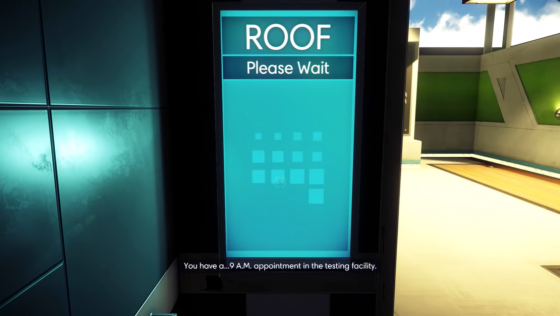
Prey doesn't quite come together completely. The art direction is great, the level design is a triumph, and once you've unlocked some more Neuromod abilities things open up, but I'd say the combat never struck the right chord within me. I always wanted it to be a little tighter, a little more responsive. Given that combat is still a solid third of the game, I'd say that's a shame. The game pushes you towards more creative solutions to problems, but the spectre of straight up shooting is always there, haunting you.
Despite that, I think Prey is an excellent game. Between this game and both Dishonored titles, Arkane Studios has proven itself as a developer adept at reviving classic experiences. They know what worked about System Shock and other games of its ilk, and the results of that knowledge and a bit of development effort are apparent here. Is it perfect? No. Does it feel like a Frankenstein of influences? Yes. Can you call it wholly original and refreshing? Not really. Despite those answers, I still love Prey for what it is and like Dishonored 2, I'm ready for Arkane Studios to build upon what they've created here.
The Nitty Gritty
Lasting appeal
Once you've finished the game once, Prey is the type of game that challenges you to try other methods of play.
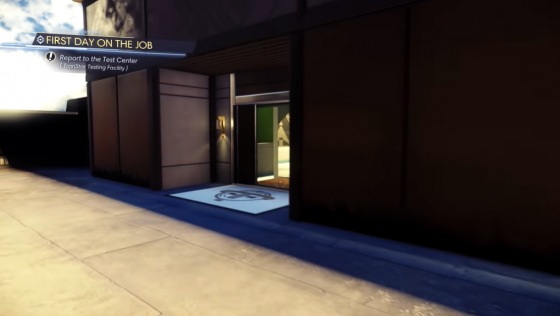
Sound
Prey has an excellent soundtrack. It's a shame the dynamic sound mixing isn't quite up to snuff.
Visuals
Prey isn't the most cutting edge game visually, but it can impress from time to time.
Verdict
Prey is a collection of past influences - a bit of System Shock here, some Bioshock there, a bit of Dead Space - but the whole is something we don't get very much these days. With the twisting halls of Talos I, Prey gives you meaningful choices in your abilities, as the level design challenges you to find interesting ways forward. The game falters in combat, but overall, Prey is a wonderful love letter some older titles that are sorely missed.


 8th May 2017
8th May 2017
